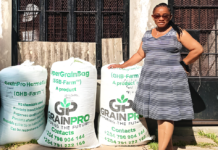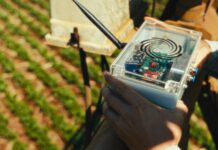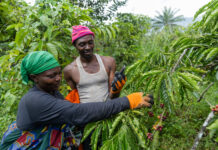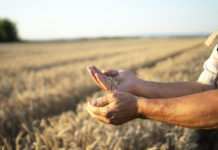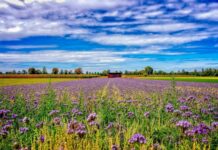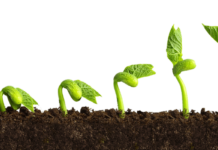Agriculture is an industry that relies on limited, shared resources, which means that farmers are by definition stewards who can never lose sight of the next generation (and those after). “We do not farm for ourselves; the decisions made on your farm today will determine the course of your children’s story,” says De Bruyn Myburgh, Lead Agronomist for Pannar Seed®. “This has always been the case, which is why farmers are the original and best stewards of the land and natural resources.”
However, in the era of modern agriculture, with its advancements in research, development, and technology, our ‘original stewards’ now bear additional responsibilities.
Many inputs and practices – from pest control to soil health and resistance management – rely on technologies that are often biological in nature. This includes biotechnology traits, which refers to specific characteristics or features of plants, animals, or microorganisms that have been altered through biotechnological methods. These traits are typically introduced to boost agricultural productivity, protect against pests and diseases, withstand environmental stresses, or enhance nutritional value. These technologies have been immensely beneficial to farmers and the environment, decreasing the reliance on insecticides, allowing the use of reduced-risk herbicides that break down more quickly in soil, and increased the productivity of their farms.
“Although biotechnology has provided significant benefits to farmers, it also has an inherent dynamic that must be actively managed and directed to ensure the sustainability of products,” says Myburgh. “These technologies undergo a lengthy and costly journey to market, often taking 10 to 15 years and costing millions of Rands. Once their efficacy diminishes, these biotechnology traits are difficult to replace in the market, adversely affecting both the technology companies that develop them and the farmers who rely on them.”
The stewardship of biotechnology traits is a shared responsibility between seed companies and the farmers they serve. Effective stewardship doesn’t begin on the farm; it must be integrated throughout the entire product life cycle. This stewardship starts with research, continues through the regulatory process, and extends into the commercial life of the product.
Stewardship through the product life cycle
At Pannar and their parent company, Corteva AgriscienceTM, the product stewardship journey begins in the research & development phase. “We invest heavily in R&D to create innovative seed technologies that enhance the resilience of our crops against insect pests and herbicides, thereby protecting farmer outputs and the environment,” says Myburgh. “Our scientists work tirelessly to develop products that are not only effective but also sustainable. We understand that the future of agriculture depends on our ability to innovate responsibly.”
Once biotechnology agricultural products are developed, they undergo thorough testing and regulatory scrutiny. Seed companies are required to meet rigorous regulatory requirements to ensure the safety and efficacy of the products they bring to market. “Our stewardship program ensures that we adhere to the highest standards of safety and transparency. We work closely with regulatory bodies to ensure that our products are safe for farmers, consumers, and the environment,” explains Myburgh.
Once the product has passed the regulatory process, it can enter the commercial market. At this stage, farmers play a crucial role in the responsible management of the “winning recipe” – enhanced seed products. Louisa Segooa, Stewardship Lead for Africa and the Middle East at Corteva Agriscience, explains, “Our stewardship program is designed to educate and support farmers in managing their farm operations responsibly. We offer farmer-focused programs and information resources that guide farmers on how to use the seed technologies sustainably.” Segooa continues, “When our farmers partner with us as joint product stewards, it is a win-win situation. Together, we can achieve healthy crops leading to improved yields while protecting the environment and maintaining the long-term efficacy of these technologies.”
The responsibility of farmers
The stewardship requirements for farmers are outlined in the Technology Use Agreements (TUA) signed prior to the use of biotechnology seeds. “Grain producers can only grow hybrids with biotechnology traits if they sign a valid TUA, which contains the conditions for planting biotech seeds,” explains Segooa. “These conditions include planting suitable refuge areas for insect-resistant hybrids as well as adhering to herbicide dosage and application timing for herbicide-tolerant hybrids. Farmers can also find detailed guidelines on managing these biotech hybrids in Pannar’s biotech product user guidelines on our website or in the product catalogue.”
The TUA and user guidelines also include important information on co-existence of biotech and conventional farming operations, as well as important information on the requirements for movement of biotechnology seeds. “Biotech crops and materials can only be transported, used, processed, or sold according to various country biosafety laws and regulatory approvals,” explains Segooa. “Moving biotech materials across borders into areas where they are not approved is illegal under national and international laws. Growers should consult with their buyers or grain handlers to understand their stance on the products being purchased.”
Stewardship in the context of biotechnology is an essential obligation that can only be fulfilled through collaboration. “We work with a shared resource,” says Myburgh. “Seed companies and farmers must work together to protect the technology in the interest of food security and a profitable, sustainable agricultural sector. It is thanks to the willingness of the vast majority of farmers to comply with all the requirements that we can continue to use the technology we have. Their cooperation lays the foundation for future technologies and products and is invaluable.”



